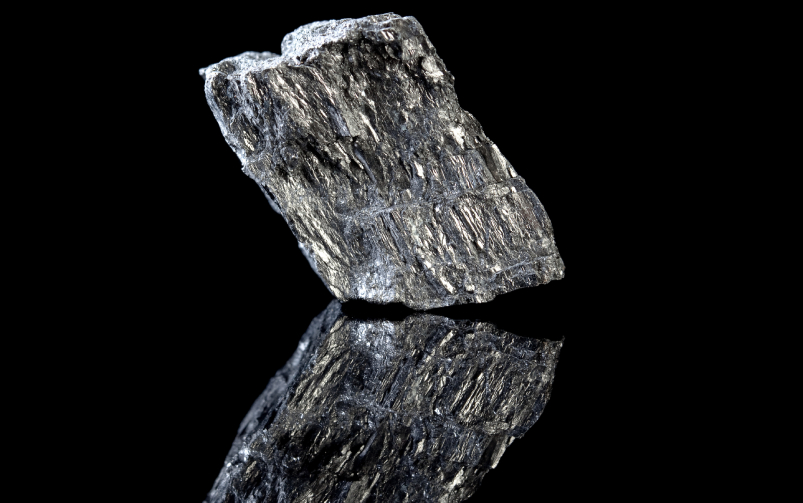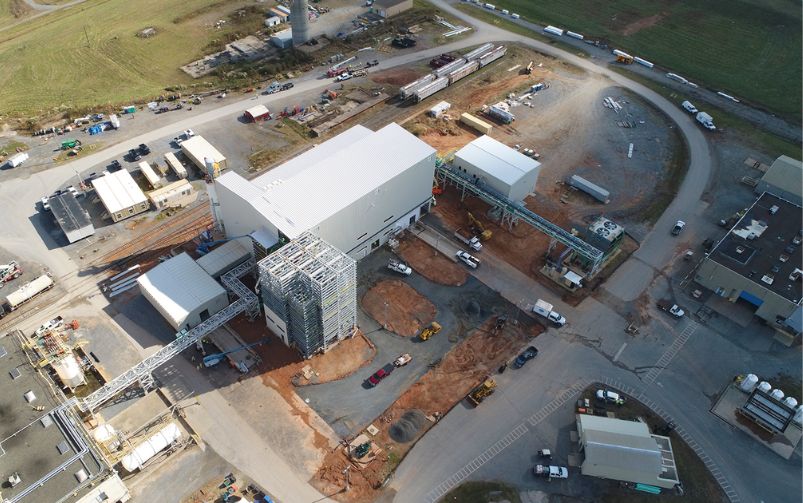Orano’s former Cluff Lake mine in Saskatchewan is the first modern uranium mine in Canada to be transferred to Saskatchewan's Institutional Control Program. Courtesy of Orano.
Welcome back to your weekly mining news recap, where we catch you up on some of the news you may have missed. This week’s headlines include a critical minerals deal between South Korea and Canada, the abandonment of the Minto mine and a cost-blowout at an Ontario critical minerals refinery project.
It has been a busy month of mergers and acquisitions, as miners rush to scoop up copper assets, wrote Kelsey Rolfe. On May 14, Newmont Corp.’s acquisition of Newcrest Mining was unanimously approved by Newcrest’s board. The US$19.2 billion merger deal would solidify U.S.-based Newmont’s position as the world’s largest gold producer. The deal also increases the combined company’s copper production to more than 158,000 tonnes a year. In another deal, Hudbay Minerals’ all-share acquisition of Copper Mountain Mining Inc. for US$439 million in mid-April will create Canada’s third-largest copper producer. Analysts predict mergers and acquisition activity will only increase as miners look towards the energy transition.
Glencore CEO Gary Nagle said buying Teck’s coal business as a standalone unit if it pursues its separation plan is a “distant second” in terms of potential benefits, as reported by Reuters. At the Bank of America Global Metals, Mining and Steel Conference in Barcelona on Tuesday, Nagle said the company still prefers its original proposal of combining and spinning off its thermal coal unit and Teck’s steelmaking coal assets. Glencore also said it is willing to increase its offer. Teck CEO Jonathan Price said at the same conference that Teck will pursue its plan to split the company in a “simpler and more direct” way after it failed to secure shareholder support for its original separation proposal.
Cambrian College’s Centre for Smart Mining is set to finish construction on its new battery electric vehicle (BEV) lab in August, and is anticipated to open its doors in October. The 5,600-square-foot lab will train students from mechanics and engineering programs on BEVs, electric powertrains and batteries. The BEV lab will also have a focus on underground mining equipment and miners will be able to test new BEVs they are interested in buying. The student-led projects will provide accurate performance forecasting to OEMs and end users from an energy utilization perspective.
Dewatering mines is an important step in mining operations, and choosing the right equipment can lead to energy savings and reduced wear, wrote Matthew Parizot in the March/April issue of CIM Magazine. Luckily for mining companies, using electric submersible pumps over diesel pumps is becoming an easier choice to make for any type of mining project, unless the power is simply not available. Electric submersible pumps can solve many issues that diesel pumps have such as cavitation or suction head, said Mike Klimes, applications engineer at Tsurumi. He added that electric submersible pumps are much cheaper to run due to low maintenance, fuelling and filtering costs. To further increase savings and reduce wear, pump companies are also developing technologies to automatically control the output of the motors powering the pump systems and cool drive systems.
CIM Magazine sat down with Ian London, a metallurgical engineer and executive director of the Canadian Critical Minerals and Materials Alliance (C2M2A), for the March/April issue. The former Ontario Hydro International CEO spoke about C2M2A’s actions to advocate for Canadian entities to become involved in the critical minerals supply chain. London said that Canada needs to drive investment in critical minerals to strengthen the domestic supply chain and to position the country as an independent and valued trading partner worldwide. He added that the timeframe to do so is shortening quickly and that urgent action from the federal government is needed.
Chile announced a strategy, not a policy, to nationalize its lithium industry, as reported by the Canadian Mining Journal. The government said the new strategy contemplates three options of public-private partnerships. Around 50 parties, including companies and countries like Canada and China, have approached Chile to show interest in participating in the lithium business; however, Chile’s Minister of Economy said the government will not give preference to any country. Additionally, on May 17, Chilean lawmakers gave a final approval for a tax reform that will require large copper and lithium producers to pay more taxes and royalties, as reported by Reuters. All that’s left for the tax to become law is President Gabriel Boric’s signature. The reform will tax companies that produce over 80,000 tonnes of fine copper a year and will reach up to 47 per cent for those producers. Chile is the world’s top producer of copper and the second-largest producer of lithium.
An agreement has been reached between Canada and South Korea to increase collaboration on critical minerals, as reported by Reuters. The agreement is aimed at developing clean technologies and supporting sustainable economic growth. South Korean President Yoon Suk Yeol and Prime Minister Justin Trudeau signed a memorandum of understanding on critical mineral supply chains, the energy transition and energy security. The leaders said this will position both countries in leading roles regarding zero-emissions vehicles and batteries. The agreement will also promote a diversification of South Korea’s sourcing of minerals.
The site of the former Cluff Lake uranium mine in Saskatchewan has been declared safe for trapping, fishing and hunting, as reported by CTV News. The site was operated by Orano and is now the first operating modern uranium mill released of its nuclear licence. The site had been in operation since the 1970s and, once operations ceased in 2002, Orano spent four years clearing out buildings and reclaiming the area, according to Orano CEO Jim Corman. Since then, the company has been monitoring the land to determine when it would be safe for use. Corman said 62 million pounds of yellowcake were sent off to refineries during its operations. The site has been moved into Saskatchewan’s institutional control program.
Electra Battery Materials is facing a budget shortfall of around $50 million to finish building its Temiskaming Shores cobalt refinery in Ontario after costs almost doubled from a 2021 estimate, as reported by the Financial Post. The critical minerals company was hoping to act as a counterweight to China’s dominance over the market but is now considering selling assets. Electra said supply chain issues and higher freight and labour costs are responsible for the unexpected cost increase. The company has already received $4.9 million in funding from the governments of Ontario and Canada and will receive an additional $15 million.
The Minto copper-gold mine in Yukon ceased operations on May 13 and the territorial government has taken over management of the mine site, as reported by CBC. Yukon’s mines minister John Streicker said the government has been aware of mine operator Minto Metals’ financial issues and that it was ready to step in to ensure the site is secure and that water treatment continues. As the site is located on the Selkirk First Nation’s category A settlement lands, Minto Metals owes around $1.37 million in outstanding royalties to the First Nation. In April, the company was warned that its tailings storage pits were almost at capacity, risking a leak into nearby Minto Creek. Since operations started in 2007, the Minto mine has produced about 500 million pounds of copper.
There are more first quarter results this week, following the batch reported in last week’s recap. Here are some highlights:
Centerra Gold reported a net loss of US$73.5 million. The company produced 33,215 ounces of gold at all-in sustaining cost (AISC) of US$1,383 per ounce and 13.4 million pounds of copper at US$2.66 per pound. The company stated that gold and copper production at the Mount Milligan mine in B.C. was reduced due to a planned mill maintenance shutdown and challenges with material handling during winter months. In addition, gold doré bar production was suspended at its Öksüt mine in Turkey in March 2022 due to mercury detected in the gold room at its adsorption, desorption and recovery (ADR) plant, and production has not yet resumed.
Fortuna Silver Mines produced 60,092 ounces of gold, 1,586,378 ounces of silver and 94,110 ounces of gold equivalent at a consolidated AISC of US$1,514 per ounce of gold equivalent. The company reported a net income of US$11.9 million and an adjusted EBITDA of US$65.3 million. It also announced the first gold pour at the Séguéla mine in Côte d'Ivoire is planned for this month and that it will be acquiring Chesser Resources Ltd. in an all-share $80.6 million deal.
That’s all for this week. If you’ve got feedback, you can always reach us at editor@cim.org. If you’ve got something to add, why not join the conversation on our Facebook, Twitter, LinkedIn, or Instagram pages?




